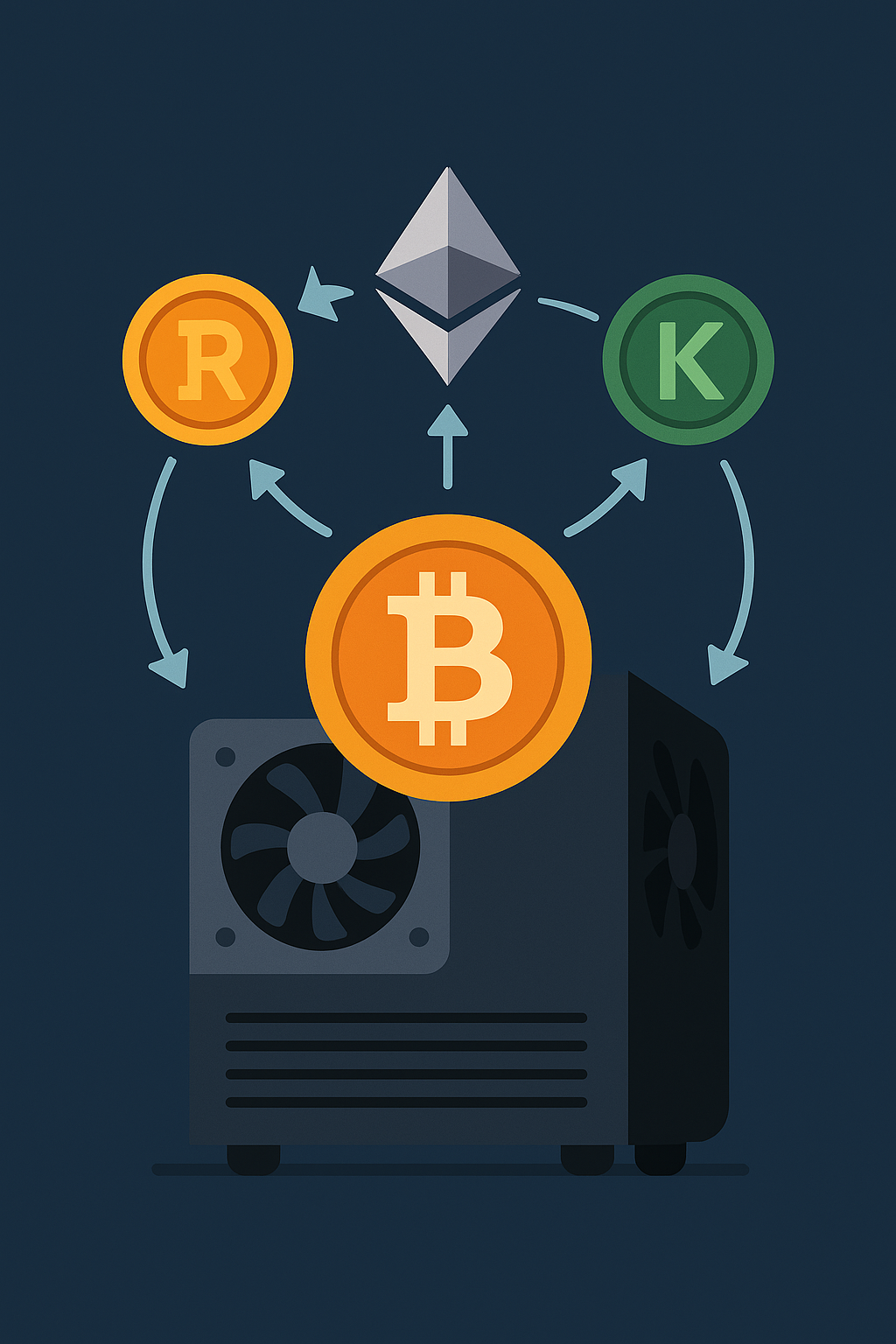Unlocking layered yield from your staked ETH without losing liquidity.
Introduction: Staking’s New Evolution
Ethereum’s shift to proof-of-stake opened the door to passive income via staking—where users lock up ETH to help secure the network and, in return, earn modest rewards. But the crypto world is never content with one layer of utility. That’s where restaking comes in.
Now imagine earning rewards not just from Ethereum staking, but also from securing other decentralized protocols—without needing more capital. That’s the premise of liquid restaking, one of the most innovative trends in DeFi right now.
What Is Restaking?
Restaking is a mechanism that allows staked ETH—either directly on Ethereum or through liquid staking tokens—to be reused to secure additional networks or services.
In traditional staking:
- You stake ETH with a validator.
- You earn rewards from Ethereum for helping secure it.
In restaking:
- You allow that same ETH to also secure other decentralized services, such as rollups, bridges, or oracles.
- These services pay you for the privilege—effectively letting you earn more from the same ETH.
It’s like renting out your house while you’re on vacation and collecting income without giving up ownership.
The Role of Liquid Restaking
So what makes it liquid?
Liquid restaking involves tokens that represent staked ETH (like stETH, rETH, or other variants). These tokens can be:
- Traded, allowing you to remain flexible.
- Used in DeFi, unlocking composability.
- Restaked, enabling multi-layered earning potential.
By depositing these tokens into a restaking platform, you receive a new token (such as eETH) that continues to earn:
- Ethereum staking yield.
- Rewards from restaked services.
- Additional yield from being used in lending platforms, liquidity pools, or vaults.
This “stacking” of yield sources is what gives liquid restaking its appeal.
Why Liquid Restaking Exists
As Ethereum and DeFi infrastructure grow, new protocols need security—but setting up their own validator networks can be costly and inefficient. Instead, they can “borrow” security from Ethereum by tapping into restaked ETH through intermediaries.
From the user’s perspective, this becomes a powerful form of passive income:
- You only stake once.
- Your assets work twice (or more).
- You remain liquid through tokenized positions.
It’s capital efficiency with yield maximization.
How Liquid Restaking Works: A Step-by-Step Breakdown
Let’s simplify how a typical liquid restaking process works:
- You stake ETH, either directly or via a service like a liquid staking protocol.
- You receive a liquid staking token (like stETH, rETH, or frxETH).
- You deposit this token into a restaking platform.
- You receive a new token representing your restaked position (such as eETH).
- This new token:
- Continues to earn ETH staking rewards.
- Accrues restaking rewards from external protocols.
- Can be used in DeFi for lending, borrowing, or liquidity mining.
- You earn from all three sources.
Where Do the Rewards Come From?
Liquid restaking typically earns yield from three layers:
- Staking Yield
This is the standard ETH staking return, often around 3–4% annually. - Restaking Incentives
Restaking protocols and the services you help secure often reward you with their own tokens, ETH, or points that may later convert into airdrops. - DeFi Composability Yield
If you use your restaked token (like eETH) in liquidity pools or vaults, you may also earn rewards like trading fees or additional farming incentives.
The result is a layered approach where your single deposit can generate multiple streams of income.
Benefits of Liquid Restaking
1. Increased Yield Without More Capital
You’re leveraging the same ETH for multiple purposes—maximizing your returns without needing to invest more.
2. Liquidity & Flexibility
Traditional staking locks up your ETH. Liquid restaking gives you a tradable token that can be moved, used, or sold at any time.
3. Composability
Restaking tokens often integrate with DeFi tools, giving you access to vaults, lending protocols, and advanced strategies.
4. Future Airdrops
Many restaking platforms and protocols offer points systems that may lead to retroactive token rewards.
Risks to Consider
Liquid restaking offers strong potential, but it’s not without its risks. Let’s walk through them:
1. Slashing Risk
If validators misbehave, a portion of your staked ETH can be “slashed,” reducing your principal.
2. Smart Contract Risk
You’re trusting multiple layers of contracts—staking, restaking, and DeFi usage. Bugs or exploits in any layer could impact your funds.
3. Token Volatility
If part of your rewards are in the form of protocol tokens, they might fluctuate wildly in value or lose liquidity.
4. Depeg Risk
Your restaked token (like eETH) might temporarily lose its 1:1 value against ETH if there’s a liquidity crunch or market event.
5. Complexity
It can be difficult to track where your ETH is allocated, how many reward streams you’re earning from, or how to exit your position safely.
Who Should Consider Liquid Restaking?
This strategy may be a good fit if:
- You already stake ETH or hold liquid staking tokens.
- You understand DeFi basics and smart contract risk.
- You’re comfortable with long-term strategies and volatility.
- You want to earn more from the same capital without constantly trading.
It may not be ideal for:
- Beginners who aren’t yet familiar with staking or DeFi.
- Traders who need immediate liquidity or prefer short-term positions.
- Users with very small balances, due to fees and complexity.
How to Start Liquid Restaking
Here’s a simplified onboarding path:
- Stake ETH or acquire a liquid staking token.
- Choose a restaking platform that supports your token.
- Deposit your staked asset into the platform.
- Receive the restaked token (like eETH).
- Use your token in a strategy that matches your risk level:
- Hold for passive yield.
- Lend for additional interest.
- Add to liquidity pools.
- Monitor performance using a dashboard or wallet tracker.
Always review exit options—some restaking platforms impose unbonding periods or redemption queues.
Final Thoughts: Should You Try It?
Liquid restaking is quickly becoming one of the most powerful yield-enhancement strategies in DeFi. It offers:
- Capital efficiency
- Layered rewards
- Access to early-stage incentives
- Liquidity without compromise
But with power comes responsibility. Liquid restaking adds new dimensions of risk and complexity—so it’s best used with caution, understanding, and a long-term mindset.
For those willing to explore this frontier, the potential to earn more while doing less is real. Your ETH has never had more ways to work for you.
Tools We Actually Use (and You Can Too):
Want to simplify your crypto life while supporting CryptoBrosKnows? Check out some of the tools we trust:
- Swap crypto instantly with Changelly – smooth swaps between hundreds of coins, with no surprise steps.
- Track your taxes (without crying) using CoinLedger – import wallets, exchanges, and generate reports with a few clicks.
- Or try Koinly – another great tax tool if you want sleek dashboards and precise reporting.
- Need quick crypto swaps? SimpleSwap offers no-fuss conversions with thousands of pairings and zero registration.
- Looking for a secure exchange? CEX.IO is a reliable place to buy, sell, and manage your crypto—especially great for beginners getting started.
Using these links helps support the site—at no extra cost to you. We only shout out tools we’ve personally tested or that our readers love.



